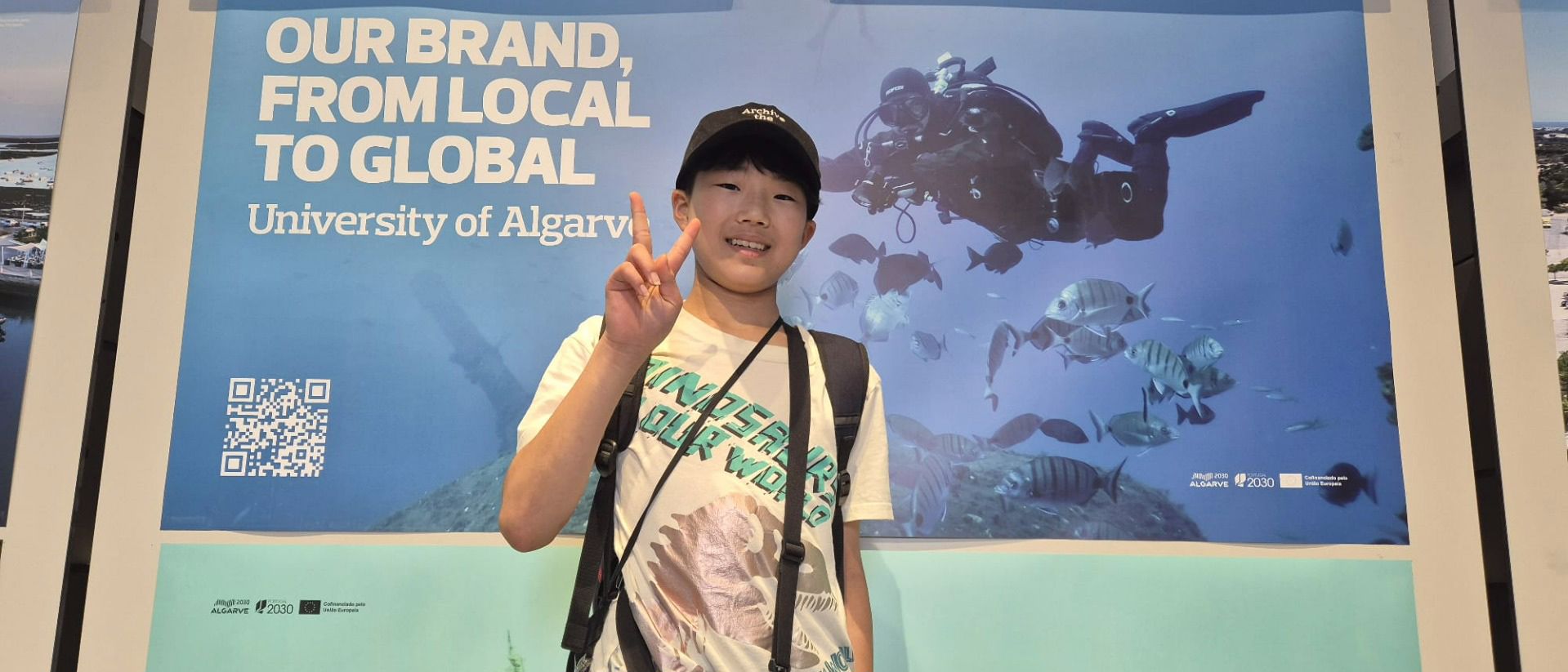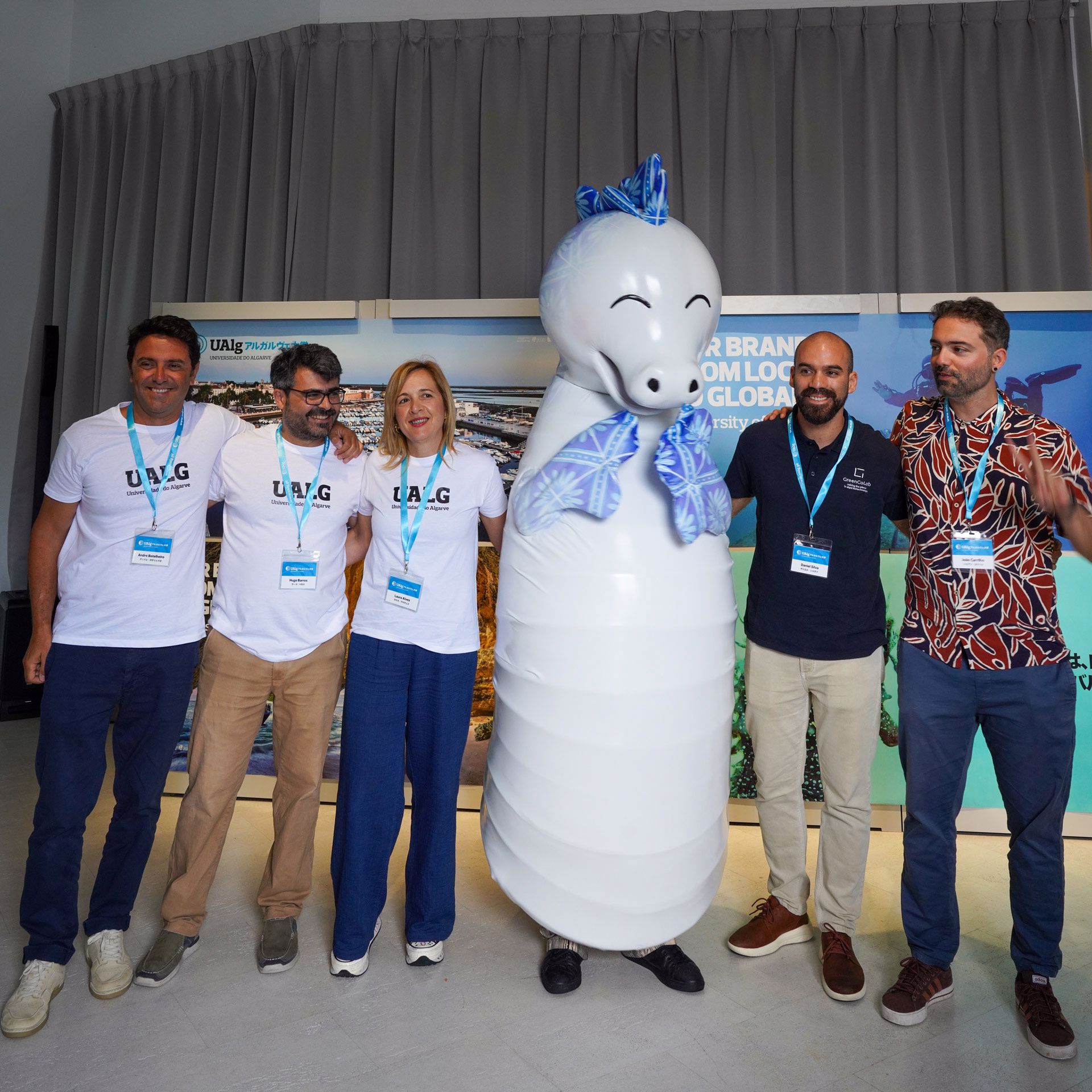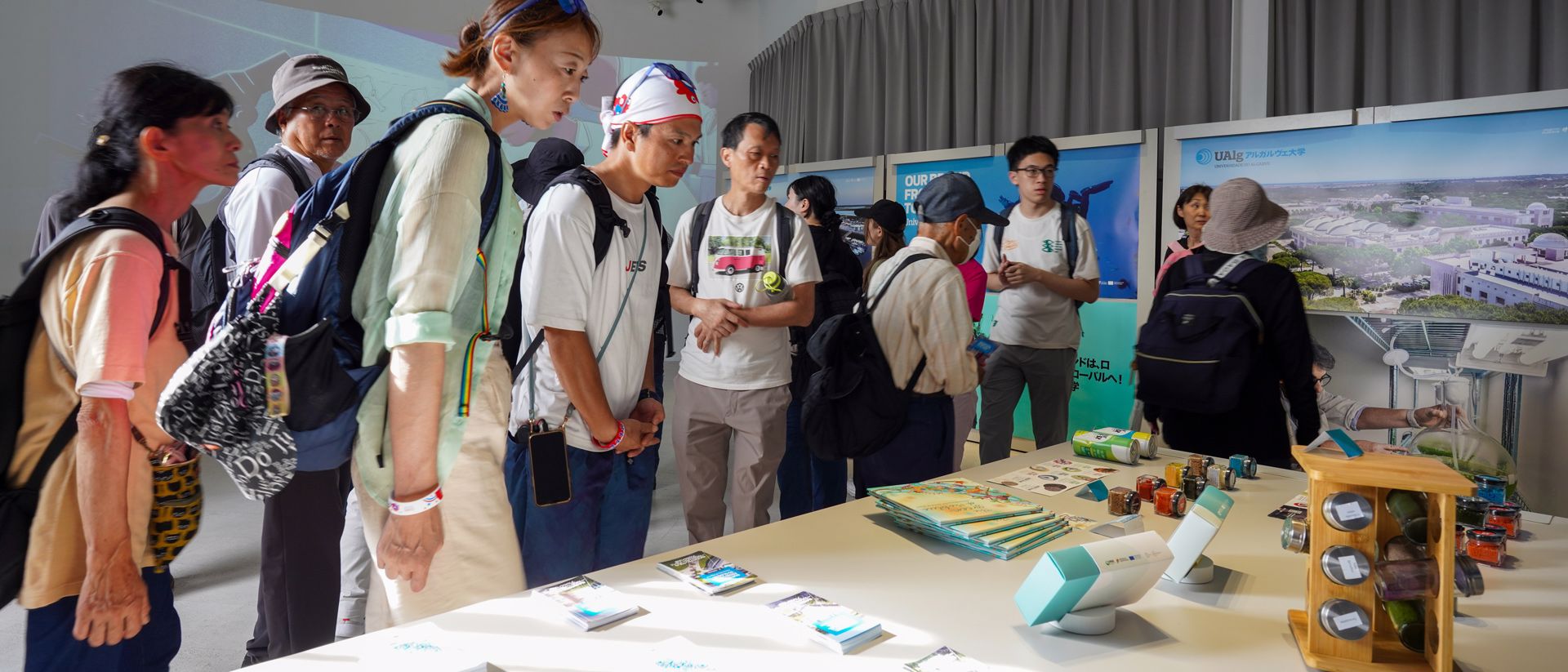The University of Algarve (UAlg) was present on 26 and 27 June at the Portugal Pavilion at Expo 2025 Osaka with an innovative proposal: an animated video that combines science, art, and intercultural dialogue, inspired by Japanese visual aesthetics.
Produced by Fly Moustache studio — created at UALG TEC Campus, the University’s business accelerator — the video presents a narrative led by a seahorse from the Ria Formosa, introducing this unique ecosystem and UAlg’s research projects. The piece pays tribute to the visual world of anime and manga and subtly raises awareness of the decline of this species along the Portuguese coast.
According to André Botelheiro, Head of the Rector’s Office at the University of Algarve, choosing Japanese animation was deliberate: “We knew that bringing scientific equipment or live species to Japan was logistically impossible. We needed something impactful that would resonate with the Japanese public. We realised that anime is a universal language in Japan — and the idea came naturally: what if we told our story in their own way?”
Produced by Fly Moustache studio — created at UALG TEC Campus, the University’s business accelerator — the video presents a narrative led by a seahorse from the Ria Formosa, introducing this unique ecosystem and UAlg’s research projects. The piece pays tribute to the visual world of anime and manga and subtly raises awareness of the decline of this species along the Portuguese coast.
According to André Botelheiro, Head of the Rector’s Office at the University of Algarve, choosing Japanese animation was deliberate: “We knew that bringing scientific equipment or live species to Japan was logistically impossible. We needed something impactful that would resonate with the Japanese public. We realised that anime is a universal language in Japan — and the idea came naturally: what if we told our story in their own way?”

The link to the Portugal Pavilion’s theme, Ocean, the Blue Dialogue, is immediate, reinforced by a happy coincidence: the official mascot of Portugal’s participation, Umi, is also a seahorse. “When we found out that Umi was a seahorse, we were already far along with the project. It was a happy coincidence. Strengthening the bridge between the Expo’s identity and the scientific research UAlg has been conducting for decades in the Ria Formosa made perfect sense,” says André Botelheiro.
The university recalls that in 2000, the Ria Formosa was home to one of the largest seahorse populations in the world. Since then, over 90% of these specimens have disappeared. “We wanted to raise awareness of this reality without dramatism — to show the beauty of the species, its symbolic value, and above all, to engage Asian visitors,” he adds.
Beyond its environmental and scientific impact, the University of Algarve’s participation is already inspiring new generations. On the first day at the Portugal Pavilion, they met Toma Kameoka, a 13-year-old Japanese boy from Osaka, who saw an animated seahorse for the first time, discovered the Ria Formosa Natural Park — and decided he wants to study Marine Biology at the University of Algarve. “I haven’t chosen my university yet, but now I want to go to Portugal to study seahorses,” he confessed enthusiastically.
The university recalls that in 2000, the Ria Formosa was home to one of the largest seahorse populations in the world. Since then, over 90% of these specimens have disappeared. “We wanted to raise awareness of this reality without dramatism — to show the beauty of the species, its symbolic value, and above all, to engage Asian visitors,” he adds.
Beyond its environmental and scientific impact, the University of Algarve’s participation is already inspiring new generations. On the first day at the Portugal Pavilion, they met Toma Kameoka, a 13-year-old Japanese boy from Osaka, who saw an animated seahorse for the first time, discovered the Ria Formosa Natural Park — and decided he wants to study Marine Biology at the University of Algarve. “I haven’t chosen my university yet, but now I want to go to Portugal to study seahorses,” he confessed enthusiastically.

For André Botelheiro, this is the real power of such initiatives: “These actions create bridges, give visibility to Portuguese science, and strengthen Portugal’s global image. When we’re in Tokyo tomorrow, meeting with Japanese universities, they’ll know who we are — because they saw us here, at the Portugal Pavilion.”
The University of Algarve’s participation is part of an initiative led by NERA – Business Association of the Algarve Region, with European funding through the INTERNACIONALIZAR+ALGARVE 3.0 project, under the ALGARVE 2030 Programme.
Portugal is one of 160 countries participating in Expo 2025 Osaka, which runs until 13 October on Yumeshima, the artificial island, under the theme “Designing Future Societies for Our Lives”. The World Expo has already welcomed 10 million visitors. The Portugal Pavilion, with over 700,000 visits since 13 April, brings together more than 150 entities — including companies, universities, municipalities, associations, and artists — in a joint effort to present a nation shaped by the Ocean.
The University of Algarve’s participation is part of an initiative led by NERA – Business Association of the Algarve Region, with European funding through the INTERNACIONALIZAR+ALGARVE 3.0 project, under the ALGARVE 2030 Programme.
Portugal is one of 160 countries participating in Expo 2025 Osaka, which runs until 13 October on Yumeshima, the artificial island, under the theme “Designing Future Societies for Our Lives”. The World Expo has already welcomed 10 million visitors. The Portugal Pavilion, with over 700,000 visits since 13 April, brings together more than 150 entities — including companies, universities, municipalities, associations, and artists — in a joint effort to present a nation shaped by the Ocean.





